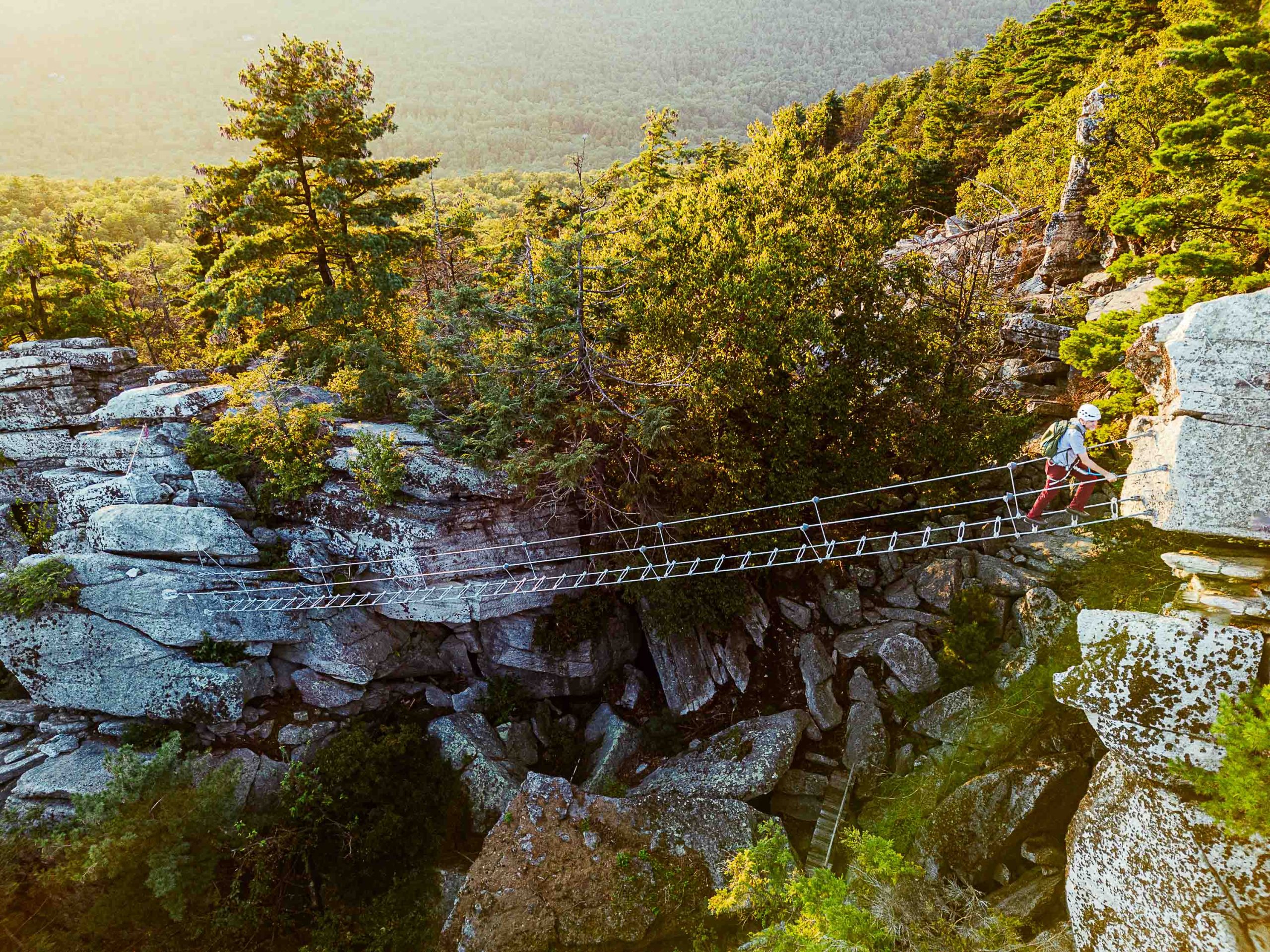This European WWI-era mode of traversing mountains is becoming more and more popular in North America. But why? Writer and climber Amelia Arvesen investigates.
My gloved hands grip an iron rung, as my feet balance on another below. I’m perched 100 feet in the air, beneath a cliff edge in Upstate New York’s Shawangunk Mountains. There’s nothing between me and the rocky ground except a polyester sling attaching my harness to a steel cable. I don’t expect I’ll fall—I’m a climber and I’ve completed two via ferratas before—but still, my amygdala is triggering adrenaline and cortisol to pump through my body.
But I’m not alone up here, I’m with six other climbers and two guides, inching our way across one of the newest via ferrata courses in North America. The route opened this spring at Mohonk Mountain House, a 155-year-old Victorian castle resort surrounded by forest and involves sliding our slings along cables and wiggling our way around mountain ledges in single file.
Whenever we reach a treacherous part—the very wobbly suspension bridge being one—we shout encouraging words and affirmations that calm all our nerves. Despite our range in climbing experience, together we make it to the end where we’re treated to a storybook view of the gem-blue Mohonk Lake and the Hudson Valley beyond.
Only a few routes existed at first, and those routes had to be built on private land as The Wilderness Act of 1964 bans the installation of permanent climbing anchors on public property. The first via ferrata course in the US arose in Kentucky’s Red River Gorge in 2001, followed by West Virginia’s Nelson Rocks in 2002 and Telluride, Colorado’s path in 2007.
In the last five years, two dozen new via ferratas have opened across North America offering more opportunity for a shared outdoor experience. Many can be found at ski areas and resorts like Mohonk; Mammoth Mountain and Tahoe, California; Jackson Hole, Wyoming; Taos Ski Valley, New Mexico; Zion, Utah; Golden, British Columbia, and Estes Park and Ouray, Colorado.
One day in June on the via ferrata, the campus hosted a group of students enrolled in an interdisciplinary program of ecology, botany, and film studies. “It was so cool to see a botanist student geeking out over a flower, and then a film student being like, ‘How do we shoot it?’” says Matt Jensen, director of The Outdoor Experience at the university’s mountain campus.
Similarly, when a fraternity visited, bravado faded to vulnerability as they traversed The Cirque route, which is the longest and steepest pitch in Colorado. “They came back totally humbled,” Jensen says, adding that the experience led the fraternity to an open conversation about their fears.
Research shows that group experiences such as on a via ferrata or other types of outdoor adventure can impact our behaviors and reshape the way we interact with others. A 2016 study by researchers at North-West University in South Africa found that outdoor adventure education can help us develop and hone our ‘soft skills,’ such as working in groups and problem-solving.

